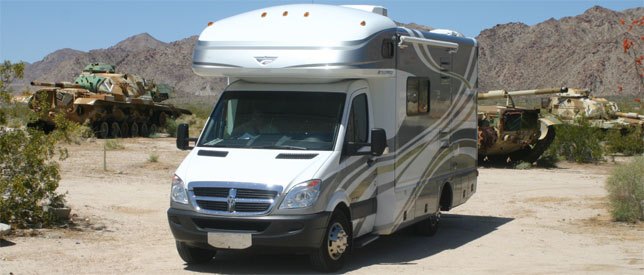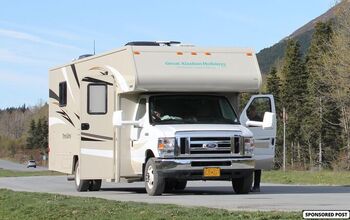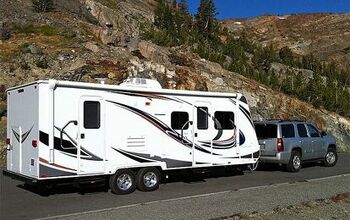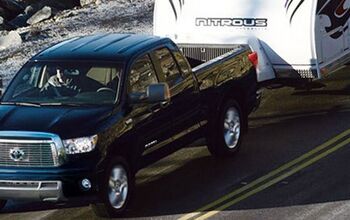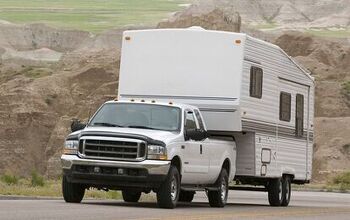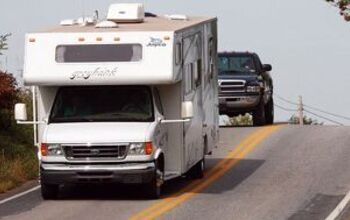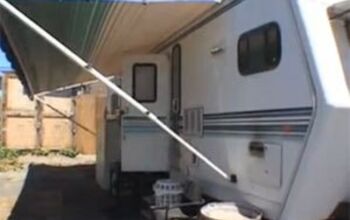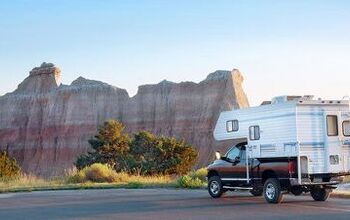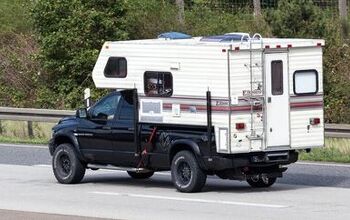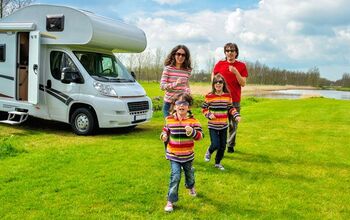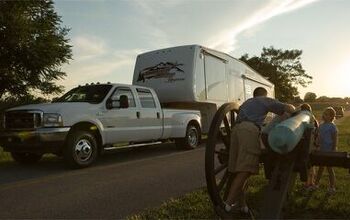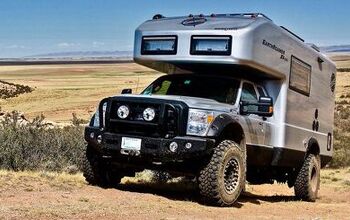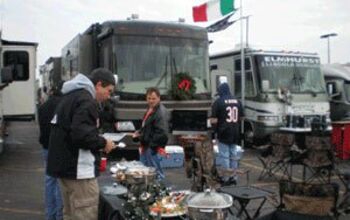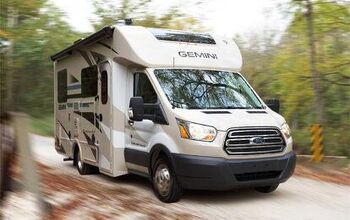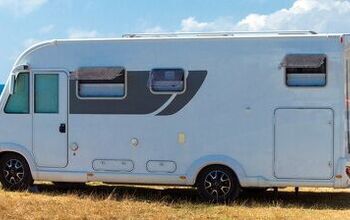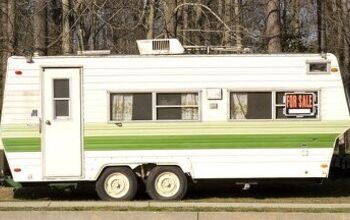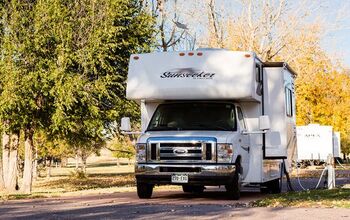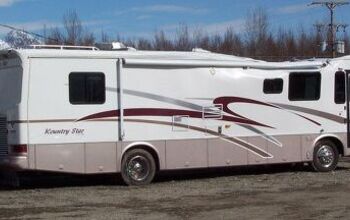2009 Fleetwood Icon Review
The Icon is part of a new breed of North American motorhome that flies in the face of traditional American RV design. It takes most of its design cues from European motorhomes that are compact and space efficient by necessity; being built on a continent where the transportation infrastructure is best suited to walking. Of course this is the reverse of North America motorhome design which, like our country, is big.
At a length of just 25 feet the Icon is small, but inside its layout and amenities bring another feature into the mix – yacht-like features – shown off in the choice of softly curved cabinetry doors throughout the interior in a rich cherry wood color. These radius accents are also found on the bathroom door; the dinette seats and the rear queen bed pedestal. Brushed nickel hardware throughout is a nice contrast. Add these features in with the use of space and weight-saving designs and further benefits emerge.
Recently I drove the Icon from below sea-level near Yuma, Arizona on the border of Mexico, up to over 7,000 feet at the Grand Canyon in the north, and then back round to Lake Havasu. I drove the Icon through a sandstorm and a snowstorm in temperatures that fluctuated between freezing to over 85 degrees. On Interstates and dirt cow paths I drove over 1,600 miles; I figure I’ve got a feel for it now.
The Icon is loosely based on the Dodge Sprinter delivery van, a vehicle I knew RV manufacturers would be all over when I first saw one some years ago now.
Conversely the Fleetwood built Icon makes use of the one-ton cutaway platform with the standard 3L diesel engine pushing power to the dual rear wheels through a five-speed automatic transmission. This diesel makes 154 hp and has a torque rating of up to 280 lb-ft. This figure is key (more so than the hp) because torque is what gets the weight moving off the line.
Frankly this little diesel engine is a marvel – it has an aluminum crankcase, a balancer shaft and two overhead camshafts per cylinder bank. This smoothes out vibration at idle or running at 80 mph, and it’s quiet and smooth as well. Also part of this new diesel powertrain is a diesel particulate filter that makes it compliant with new environmental regulations. That means no smoke and no smell. This is not your grandfather’s diesel – it’s a whole new generation. The big upside is the mileage.
Fleetwood says the Icon can get 20 mpg (US gal), but my numbers over my 1,600 mile trip averaged closer to 16 mpg; but I have to qualify that. I drove the Icon at the limit including having the cruise set. My fuel bill for the whole circle tour of Arizona was 350 bucks.
The standard transmission coupled to the diesel is a five-speed automatic that can also be operated like a manual by simply tipping the gearshift lever left or right. The lever itself is mounted in the center console stack; it has a short throw, sits out of the way of in-and-out activity and moves easily. Working with the engine braking this manual feature is particularly handy on long downhill grades. That saves the brakes, which are discs all around that bite hard when needed.
Driving north from Phoenix, into “Red Rock” country, I had several chances to let the engine-braking hold the Icon’s speed, getting us down the mountains safely. As we headed up towards the tourist town of Sedona we kept hearing weather forecasts saying snow was expected. That was surprising enough but the broadcaster also kept adding “at 6000” – I wasn’t sure what that meant – but I figured it out the next morning.
The next day as we headed out of town we started to climb and soon enough at 6000 feet of elevation the rain turned to snow and above 6000 there was a decent accumulation. Our progress slowed to around 20 mph on the switchbacks (many without guardrails) and by the time we plateaued near Flagstaff I was starting to feel right at home – after all we know all about spring blizzards in Ontario, Canada. Even in the snow I found that the Icon carried enough weight to give it good traction and the diesel moves it evenly without spinning the tires. Our progress up the valley was slow but once we got on the interstate again we didn’t have any problem running at the speed limit- even in the blizzard the Icon was stable and slush had minimal effect on its steering.
In fact steering on the van is easy; with a small pickup-truck like wheel connected to the rack and pinion steering that makes negotiating winding roads and highways all the same. Controls are simple and well placed – with power windows and door locks (that work off a key fob button). The cab is comfortable, particularly with the optional Ultraleather driver/passenger seats and entertainment is offered in the form of AM/FM/CD radio with plugs for iPod, MP3 and a USB slot. The radio can also be piped into the surround sound system which features two flat-screen TVs and a DVD player. Hook-ups include satellite, cable and antenna.
It’s worth mentioning that the wide raked windshield and the dropped nose of the Icon also offers excellent visibility. This observation was gained not only while driving through the Arizona desert but while jamming with rush-hour traffic in Phoenix. And that is a key feature of the Icon – it drives small. I had no problem getting it in and out of anywhere. With large heated mirrors and a backup camera maneuvering was a matter of patience not sweating; and good thing because this was our only vehicle – so wherever we went it took us. On any given day we were in and out of our campsite several times – whether to pickup groceries see the sights or go to dinner. The Icon went everywhere and it fit wherever. This fact alone may well convince some potential buyers who currently run a larger RV and tow a car to downsize and simplify their travels.
So as it’s a multi-purpose unit be prepared to spend a lot of time in the Icon. For this reason the single slide (which operates electrically) is important. It opens up enough space so doing the “bump” is a choice not a necessity while passing each other in the galley.
This compact galley offers an Apollo half-time convection oven, which also functions as a microwave. The three-burner cooktop is found just below directly across the aisle from the 3-way refrigerator/freezer. The Corian countertop space is limited but can be expanded by popping the oval sink cover in. The single gooseneck faucet also swivels out of the way when not in use. Having a window right at the counter is a nice bright touch.
For a small unit, bedding down is still a matter of choice. The overhead 49” X 74” bunk will sleep two, as will the fold-down dinette and the rear 52” X 72” pedestal bed. Sleeping for six in all, though most often two would be normal (or two adults with kids). There is a ladder for the bunk, but most grown-ups will opt for the dinette which has a fold-down mechanism that can be released with one hand. This set up also does away with the support leg that is so much fun to bash your ankles with. The one downside to the tight fit of the rear bed is it requires crawling in and rolling out.
The exterior storage is a pass-thru design with the centre section being quite narrow. The total storage is 45 cu-ft while the interior storage is actually more at 49 cu-ft. The bulk of this is under the dinette seats and under the lift portion of the pedestal bed. But in addition there are multiple small spaces to stash items. As proof two of us over ten days had ample space for all the items we brought.
